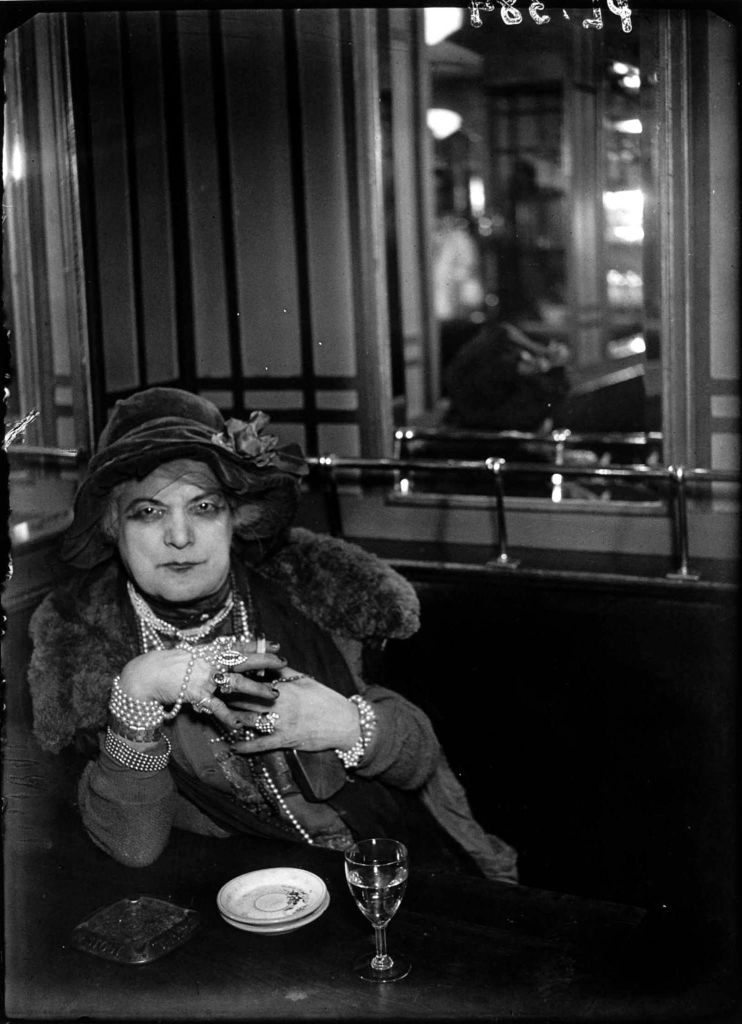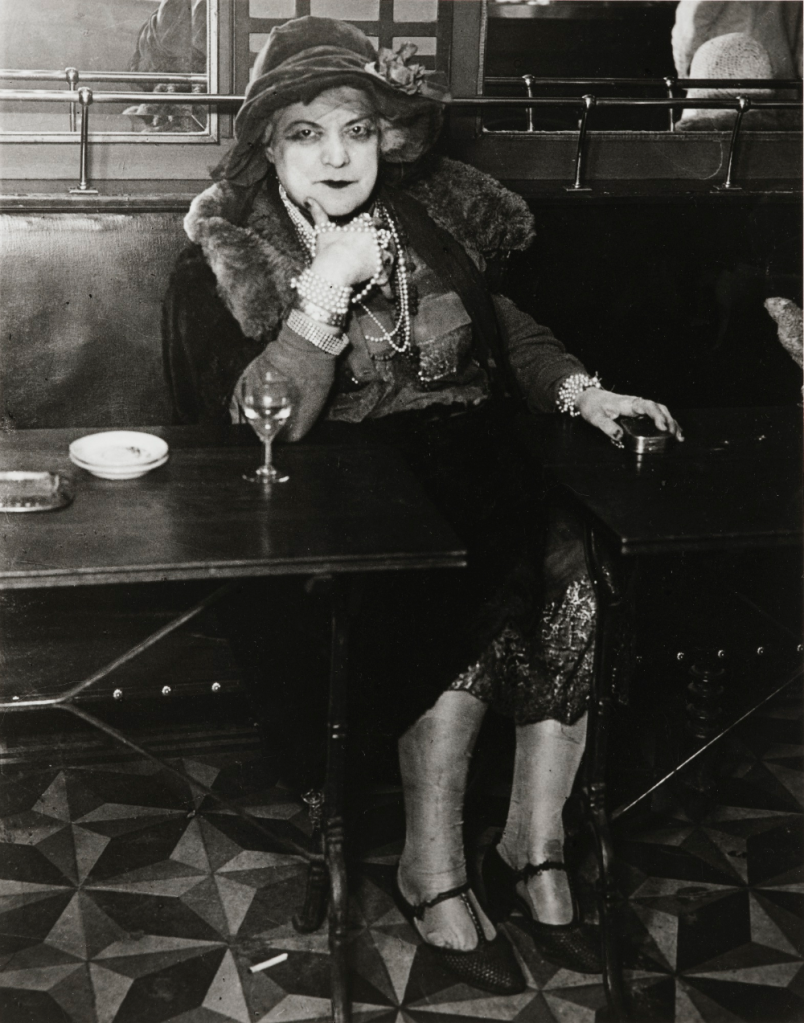The iconic Hungarian photographer, Brassaï (née Gyula Halász) was famed for his photographs of Paris’ seedy underbelly. One of his most enduring subjects is so infamous that she even informed a fictionalised tale delivered by Leonardo DiCaprio in James Cameron’s Titanic (1997).
Brassaï first encountered the subject in the winter of 1932. Referred to locally as ‘La Môme Bijou’ and ‘Madame Bijou’, she sat nursing a drink in Montmartre’s Bar de la Lune in the early hours of the morning. In his own words, Brassaï was struck by the ‘fantastic apparition that had sprung up out of the night, like an entomologist by a rare and monstrously beautiful insect’.


Sensing the photographer’s astonishment, the bartender whispered: “It’s La Môme Bijou–Miss Diamonds. Once she was rich and famous, led the good life. When people still had carriages, she rode in the Bois de Boulogne in her barouche… Now she lives on charity, she reads the customers’ palms”.
As Brassai’s images show, La Môme Bijou was known for her garish make-up, tattered finery, and masses of fake jewels–the feature that would inform the fictional tale of ‘Madame Bijou’ recounted by Jack Dawson in Cameron’s blockbuster hit. In life, it was rumoured that she had once been a demi-mondaine and had sold her wares from the Moulin Rouge and the bars and dance halls of Place Pigalle. She was reportedly the inspiration for Countess Aurelia in Jean Giraudoux’s The Madwoman of Chaillot (1943), who leads a resistance against a troop of scheming oil barons who threaten to destroy bohemian Paris. The introduction of Countess Aurelia reads:
‘She is dressed in the grand fashion of 1885, a taffeta skirt with an immense train-which she has gathered up by means of a clothespin-ancient button shoes, and a hat in the style of Marie Antoinette. She wears a lorgnette on a chain, and an enormous cameo pin at her throat. In her hand she carries a small basket’.
The Madwoman of Chaillot, Act 1, Jean Giraudoux.

The description perfectly encapsulates what is so fascinating about La Môme Bijou herself. She is a veritable relic of the bygone Belle Époque–a beguiling mix of grandeur and squalor.
Following the day of The Madwoman of Chaillot’s premiere at the Théâtre de l’Athénée in 1945, journalist Joseph Kessel recounted his memories of La Môme Bijou:
‘I remember her well. You used to see her at dawn […] She would suddenly turn up in some brassiere on the Boulevard de Clichy or in a delicatessen on the Place Pigalle […] Men in the bars would buy her sausages and red wine to get her to tell stories. Every morning she was drunk, and she never laughed. A horrible, fascinating old woman, on the brink of madness, on the brink of decay, she had an indefatigable air of grace, of love…’
La Môme Bijou was reportedly furious when Brassaï printed her images in 1933’s Paris de Nuit and made an appearance at his publisher’s to make her feelings known:
“You printed nasty things about me. Do I seem to be ‘escaped out of a nightmare by Baudelaire’? Do I? Me, a nightmare? You’ll pay for it!”
She refused to leave the office until Brassaï’s publisher remunerated her for the insult.
Sources:
Brassaï: The Secret Paris of the 30’s (London: Thames and Hudson, 1976).

Leave a comment